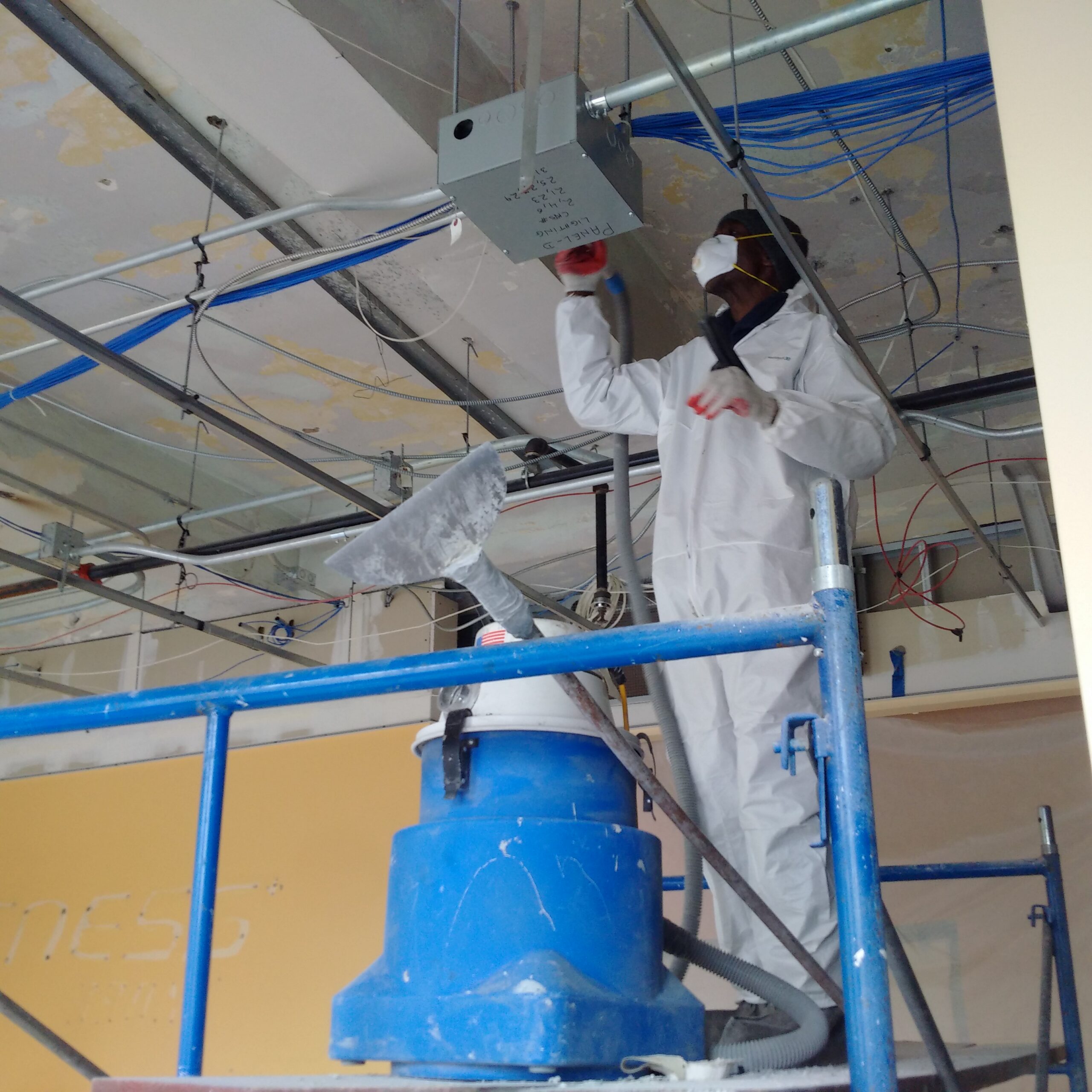Lead Paint Removal Service-- NYC's Trusted Solutions for Lead Safety And Security
Lead Paint Removal Service-- NYC's Trusted Solutions for Lead Safety And Security
Blog Article
Best Practices for Making Sure Safe and Thorough Lead Infraction Reduction
Dealing with lead offense abatement needs a multi-faceted approach to guarantee both safety and security and compliance. Preliminary analyses using sophisticated discovery approaches such as XRF analyzers set the stage for a specific understanding of contamination degrees. Including appropriate control techniques, including closed obstacles and HEPA purification, coupled with the use of individual safety equipment (PPE) for workers, develops the backbone of a safe procedure. Meticulous cleanup procedures, including HEPA vacuuming and wet-wiping, are critical. Yet, it's the final clearance process, involving complete examinations and research laboratory testing, that truly confirms a lead-free atmosphere, making sure long-lasting safety and security. Just how do these techniques adjoin to ensure detailed lead abatement?

First Evaluation
Carrying out an initial evaluation is a vital primary step in lead infraction reduction. This phase encompasses a thorough assessment of the residential or commercial property to recognize the existence, level, and certain locations of lead-based dangers. Qualified specialists, such as certified lead assessors or risk assessors, should execute a thorough website evaluation, utilizing tools like X-ray fluorescence (XRF) analyzers to accurately spot and gauge lead focus in paint, dust, dirt, and water.
The evaluation has to likewise include a review of the structure's history, previous records, and any problems or wellness issues reported by passengers - Lead Removal Contractors. Documenting the findings diligently is important, as these documents create the basis for developing an efficient reduction strategy. A complete analysis also includes tasting and research laboratory evaluation, which are crucial to verify the visibility of lead and overview subsequent actions
Additionally, it is critical to interact the outcomes transparently to all stakeholders, including residential property proprietors, lessees, and regulatory authorities. By guaranteeing that the preliminary evaluation is carried out with accuracy and roughness, experts can lay a strong structure for a targeted and effective lead reduction procedure, eventually securing public wellness and making certain conformity with governing criteria.
Correct Control
Correct control is important to prevent the spread of lead impurities throughout abatement tasks. Efficiently managing control reduces the risk of lead dirt and debris moving to non-work areas, therefore securing both the environment and people outside the immediate job zone.

Regular examinations of the containment location are required to look for breaches or weak points in the barrier. Any kind of identified problems should be immediately addressed to preserve the integrity of the containment. By sticking to these practices, reduction tasks can efficiently regulate lead contamination and alleviate connected wellness threats.
Employee Security
Making sure worker security is paramount during lead abatement jobs to prevent work direct exposure to harmful lead fragments. Crucial procedures consist of using personal protective equipment (PPE) such as respirators, handwear covers, and full-body fits specifically designed to obstruct lead dirt and fumes. Workers must undertake comprehensive training on the appropriate use and upkeep of PPE, consisting of healthy testing for respirators to guarantee maximum effectiveness.
Design controls, such as neighborhood exhaust air flow systems, are crucial in reducing airborne lead focus in the job setting. Management controls need to additionally be implemented, including limiting the duration of exposure and rotating workers to reduce individual exposure times. Regular clinical surveillance and organic surveillance are indispensable for early discovery of lead absorption, making it possible for prompt treatment Discover More and therapy.
Moreover, developing a decontamination procedure is important. Workers must follow stringent decontamination procedures prior to breaks and at the end of their change to stop lead dust from being carried outside the workplace. This consists of complete hand and face washing with lead-specific cleaning agents and transforming out of polluted clothes.
Thorough Cleanup
Keeping a risk-free workplace expands past worker defense and incorporates careful cleanup to ensure lead fragments are completely removed from the website. The process of meticulous Learn More cleaning is vital in avoiding the recontamination of the abated location and protecting both existing and future passengers.
To achieve a thorough clean-up, all workspace must be methodically decontaminated. This includes the use of specialized HEPA (High-Efficiency Particulate Air) vacuum cleaner cleaners and wet-wiping methods to capture and eliminate great lead dust that might have chosen surface areas. It is vital to clean all horizontal surface areas, including floorings, home window sills, and countertops, along with vertical surfaces that might have trapped lead bits.
Employees must use appropriate personal safety tools (PPE) during clean-up to stay clear of exposure to residual lead dirt. Made use Click Here of cleaning materials such as wipes, sponges, and wipe heads need to be gotten rid of in conformity with contaminated materials disposal guidelines.

Last Clearance
Last clearance is the essential concluding phase of lead abatement that determines whether the website is safe for reoccupation. This crucial action involves comprehensive assessment and testing to verify that all lead threats have been efficiently removed.

Final clearance screening not just secures future owners but likewise makes certain compliance with regional, state, and government laws. It serves as a recorded validation of the abatement contractor's adherence to market finest techniques. Making sure a complete and successful final clearance is important in safeguarding public health and wellness and fostering rely on the abatement process.
Final Thought
Guaranteeing risk-free and detailed lead offense reduction requires a complex strategy including first assessments with advanced discovery techniques, efficient containment methods, rigid worker security protocols, and meticulous cleaning treatments. The last clearance phase, featuring detailed evaluations and laboratory testing, is crucial to confirm compliance with EPA standards. Adherence to these ideal practices assures a risk-free environment for residents, minimizes health dangers, and upholds governing requirements, consequently promoting public health and security in lead-affected areas.
Report this page